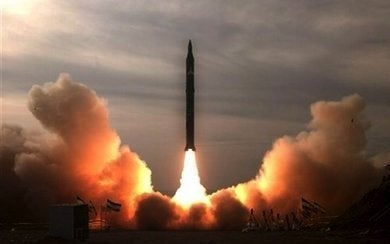
After a year-long suspension, negotiations have once again resumed with the Iranian regime over its nuclear program, and with them hopes have been rekindled once again that this international crisis will be put to rest through diplomatic maneuvering.
But the optimism by some about the success of negotiations is certainly misplaced and unjustified and even contradicted by the facts and evidence as well as the indisputable historical trend.
The latest information obtained by Iran's main opposition reveals that the regime has in fact significantly boosted the activities of the entity tasked with nuclear weapons development. The secretive New Defense Research Organization (known by its Farsi abbreviation SPND) carries out research and testing on nuclear warheads and detonators, among other things.
The main Iranian opposition, Mujahedin-e Khalq (MEK) which was the first to expose the regime's nuclear program, has identified over 60 managers and experts as well as 11 institutions and companies affiliated with SPND.
SPND's main headquarters is at the Lavizan region and it is headed by Mohsen Fakhrizadeh, who for years has overseen the regime's nuclear warhead development project. SPND has seven main divisions, each of which works on specific areas for the development of a nuclear bomb.
The Center for New Defense Technologies, for example, conducts research and related activities on the production of the main ingredient for the bomb, enriched uranium. According to the latest information, the uranium enrichment activities at the new Fordow site, hidden deep inside the mountains near Qom, are closely monitored by the experts working at this division, which reveals the sinister objectives which guided the regime's attempts to build the Fordow site.
Another division of SPND works on the research and production of metallic components for the manufacture of warheads. Advanced machinery have been purchased by front companies and smuggled into Iran, and explosive tests are carried out at the Parchin site.
SPND also has a division for research and production of detonators for a nuclear bomb. The center known as METFAZ is run by a veteran member of the regime's Islamic Revolutionary Guard Corps (IRGC) and has a five-storey unmarked building in Tehran. This division works on obtaining and designing high-explosive materials and components and has production and testing units.
SPND's chemical research group has a secret office in a Tehran district and does not have electronic connections to the outside. Communication is carried out by a permanent courier, and public access to the office is prohibited.
While the facts overwhelmingly point to a well-oiled, secret and complex nuclear weapons development machinery, how can one expect the negotiations to succeed?
Tehran's main objective from the nuclear talks in Istanbul is to keep the negotiations alive, agree to a second round of talks without making any commitments, and providing any concessions. The outcome would be Iran's continued advancement of its nuclear weapons program, while the international community would be idle waiting for the next round. Indeed, years of fruitless talks can foretell the real chances of success for the current round of negotiations.
Since 2002, when the main Iranian opposition first exposed the regime's nuclear program, every time hopes and expectations were raised about talks under succeeding US administrations, the Iranian regime has dashed those hopes. Since 2003, whether under the "moderate" president Mohammad Khatami or during Mahmoud Ahmadinejad's presidency, numerous packages of incentives was offered to Tehran to entice it to end uranium enrichment. None have succeeded.
After the IAEA failed in its attempts to get answers from the regime in 2007, US and its European allies once again tried to salvage the talks by promising fully normalized economic relations but were rebuffed by Tehran.
When President Obama took office in 2009, Iran was already enriching uranium at 3.5 percent levels and thousands of centrifuges had been installed at Natanz. Still, President Obama rekindled hopes for negotiations. Three years later, Tehran is enriching up to 20 percent and has enough enriched uranium to make four nuclear weapons, if further enriched to weapon grade. Instead of a peaceful solution, the probability of a war has increased.Undoubtedly, history points to a trend. The Iranian regime has welcomed negotiations at every turn to deflect pressure and buy time.
Engagement and talks have failed to stop Tehran's drive, which argues for a fundamental change if the world is looking to avoid an Iranian bomb or the threat of military intervention.President Obama has a historic opportunity to avoid such dire outcomes by changing course and reaching out to the Iranian people and their organized opposition. The nuclear issue can be resolved once and for all only through democratic change. Members of Congress and dozens of prominent former officials support such an outcome.
Time is running out. In the context of the Arab Spring, which has revealed the power of the suppressed populations, the U.S. has to focus on the Iranian people and their organized opposition as the key to building a free, democratic and non-nuclear Iran. That is the surest way to salvage a peaceful solution and avoid the military option.